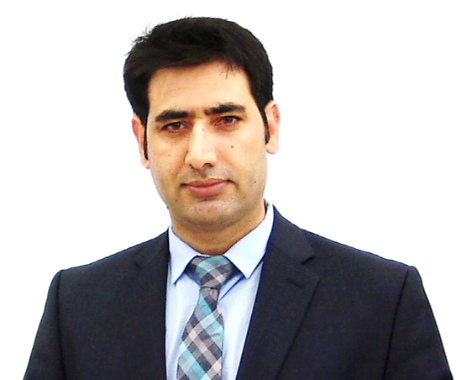MSU School of Packaging researchers are exploring high-barrier biodegradable paper as an alternative to plastics
The MSU School of Packaging was awarded a two-year, $450,000 National Science Foundation grant to design a high-barrier biodegradable paper (HB2P) as an alternative to plastics.


Muhammad Rabnawaz, Ph.D., associate professor in the Michigan State University (MSU) School of Packaging was awarded a two-year, $450,000 National Science Foundation grant to explore the development of high-barrier biodegradable paper (HB2P) as an alternative to plastics and PFAS-coated paper.
Rafael Auras, Ph.D., also from the School of Packaging, and Christopher Saffron, Ph.D., from the Department of Biosystems and Agricultural Engineering are co-PIs on the project.
Traditionally, the paper used as an alternative to plastic is laminated but, once it’s laminated, it is not recyclable. The goal of this research is to design a coated paper that is biodegradable and can be converted into compost soil under controlled conditions while being able to readily biodegrade into non-harmful products if it leaks into the environment.
Rabnawaz explained the motivation behind the project, “A plastic waste-free packaging world is my career mission. We are with this planet, and we want to save it from any kind of pollution. We really feel strongly about this, so we want to solve this problem.”
According to Rabnawaz, the use of innovative dual-layer-coated paper has the potential to offer water and oil resistance, as well as gas and moisture barrier properties for single-use packaging such as cups, plates, food wrappers, bags, flexible pouches, etc.
“We're trying to make a plastic that once it is applied to paper it will do the job but during the recycling process, we will be able to separate the plastic from the paper pulp,” Rabnawaz explained. “By doing this, you recover the pulp, remove the plastic, and are able to keep the paper pulp and the plastic in the streams in a closed loop approach.”
The project will also address several knowledge gaps including those associated with the creation of biodegradable polyester latex without using organic solvents, obtaining high-barrier coated paper that matches or exceeds the performance of conventional high-barrier multilayer plastics, and the environmental footprint of high-barrier paper. The results acquired through this work aim to provide foundational knowledge to create data-informed technologies that will promote environmental sustainability.
In addition to the science, this project also has a DEI (diversity, equity and inclusion) focus. The project encourages participation from underrepresented minority undergraduates to help them prepare for future careers in the sustainable packaging solution field.
“They go to the lab and they learn. They see the things and they become part of the solution that we are developing. And when we are trying to publish the data, then they become co-authors on the research article, which gives them more encouragement to pursue graduate studies in packaging science,” Rabnawaz said.



 Print
Print Email
Email




